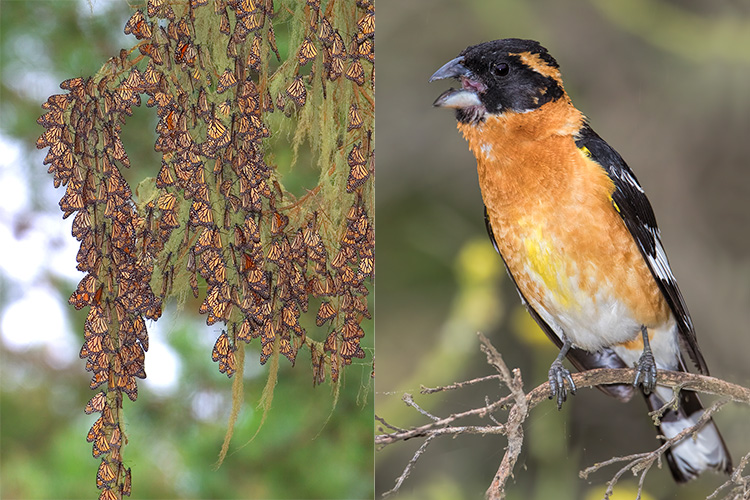Monarch butterflies (Danaus plexippus) exclusively consume milkweed plants (genus Asclepia) both for nutrition and to help deter predators. Milkweed plants contain toxins that accumulate in the butterfly larva, or caterpillars, as the insects feed; those toxins then persist into the adult stage. Monarchs have evolved specific genetic mutations that protect their species from these poisons. Yet various organisms, including black-headed grosbeaks (a kind of bird) and eastern deer mice, as well as parasitic wasp and nematode (worm) species, can withstand the toxin and readily eat monarch butterflies. A new study has now shown how this is possible: all four predators, it turns out, have evolved monarch-like genetic mutations in their respective genomes that confer milkweed toxin resistance. The findings are a remarkable example of convergent evolution across distantly related organisms, whereby organisms independently evolve similar traits as they adapt to comparable environments and selection pressures. See also: Adaptation (biology); Convergent evolution; Evolution; Genetics; Gentianales; Insecta; Lepidoptera; Mutation; Plant-animal interactions; Poisonous plants; Toxin

The toxins in milkweed are called cardiac glycosides. These molecules interfere with sodium-potassium pumps found in cells that are important for the beating of the heart and the functioning of nerves. Animals—including humans—exposed to high levels of cardiac glycosides can experience cardiac arrest and death. At lower levels more often encountered by non-adapted birds eating monarch butterflies, vomiting is a more common response—and for butterflies, an effective predation deterrence. The specific mutations evolved by monarch butterflies and other known milkweed-feeding insects genetically code for amino acid substitutions in a subunit of an enzyme critical to sodium-potassium pump operation. Those substitutions allow the pumps to continue working despite the presence of cardiac glycosides. See also: Amino acid; Cell (biology); Enzyme; Heart (vertebrate); Ion transport; Nerve
Researchers at the University of California, Berkeley, were curious to know if the same mutation appeared in species that successfully predate on monarchs. The genome of one such species, the black-headed grosbeak, was published in 2020, enabling the comparison. A review of the bird's genome confirmed the presence of substitutions highly similar to those found in monarchs and which do not appear in species displaying intolerance to milkweed’s cardiac glycosides. The researchers extended their search to three organisms with published genomes and again identified highly similar resistance mutations. According to the researchers, the findings likely represent the first discovery of the same resistance mutations occurring across four major animal clades extending into the second and third tropic levels, or stages, in a food chain. A food chain is a route in a food web, which is a model depicting how organisms eat other organisms within the same ecosystem. See also: Animal; Ecology; Ecosystem; Food web; Trophic ecology





